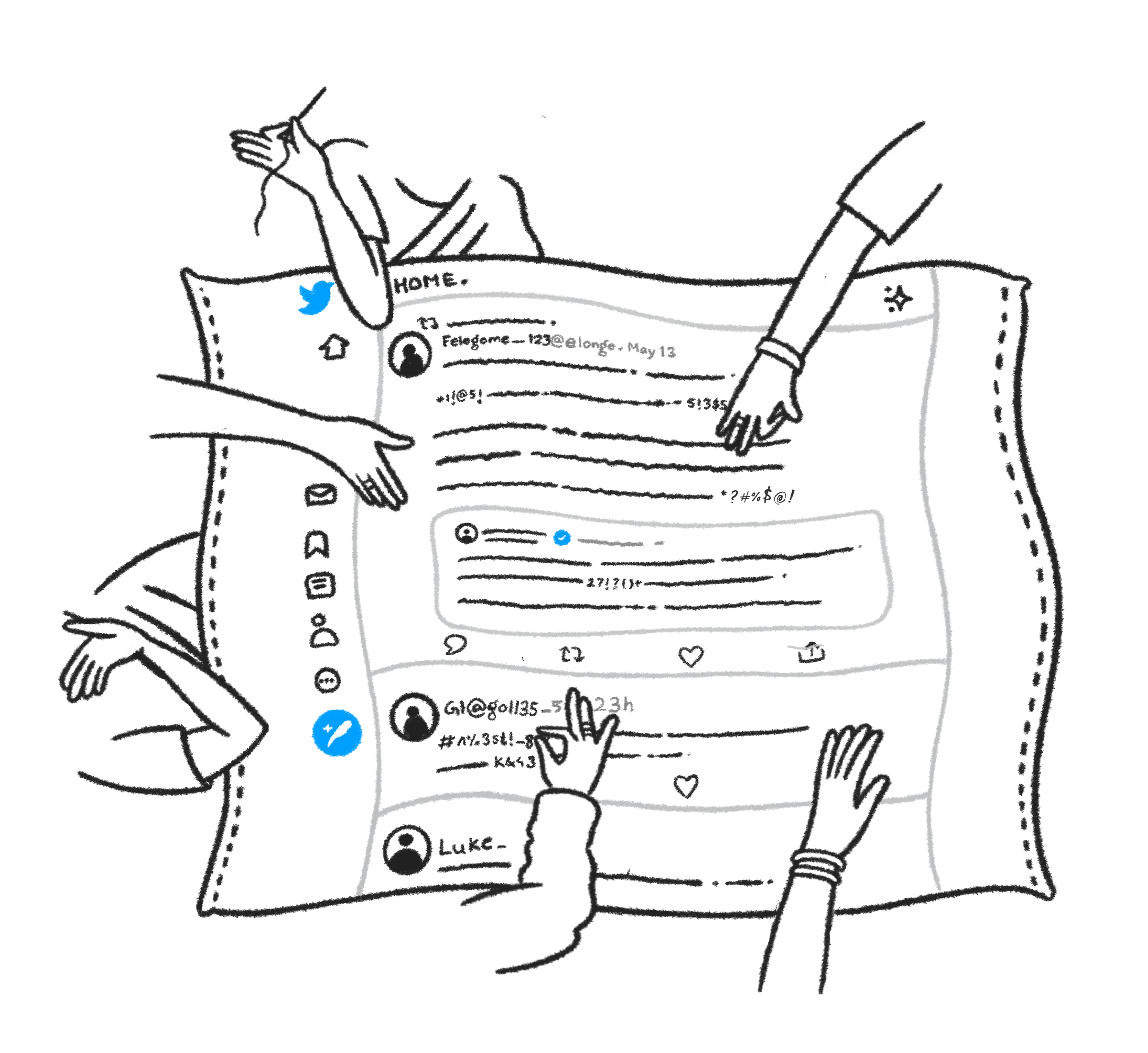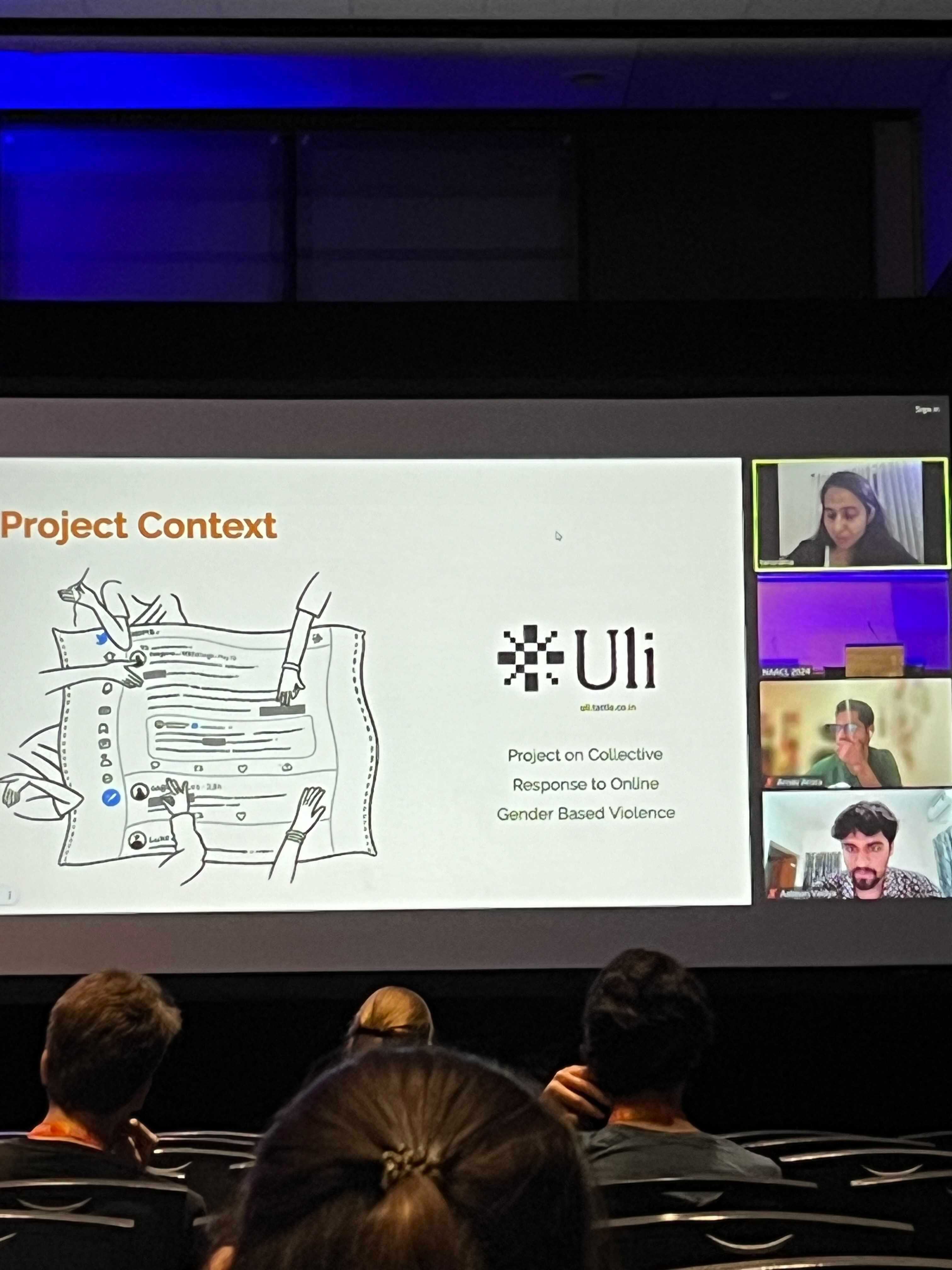
Uli is a project that aims to reduce the effects of Online Gender-Based Violence, and provides tools for collective response.

To download Uli, see documentation on how to use it, and read blogs and research findings, please go to Uli's website: https://uli.tattle.co.in/
Supported By
- Mozilla Foundation's 2023 Data Futures Lab Cohort.
- GitHub's DPG Open Source Community Manager program.
- The pilot stage was supported by the Digital Society Challenge grant provided to the Centre for Internet and Society.
Highlights
We gave a keynote at the 2023 Symposium of the ARC Centre of Excellence for Automated Decision-Making and Society (ADM+S) where we spoke about developing Uli as a Feminist AI project.

The Uli dataset paper received the Outstanding Paper award at the Workshop on Online Abuse and Harms at NAACL!
Read PaperRelevant Repositories
Uli Code for the Browser Plugin and Uli Website
Latest Blogs
Latest Updates
Apr 23 2025
Apr 17 2025
Roundtable Discussion on Online Safety of Women in India
Mar 17 2025
Feb 14 2025
Jan 28 2025
Nov 14 2024
Digital Citizen Summit: Lightning Talk on Uli
Oct 24 2024
Oct 19 2024
Jun 28 2024